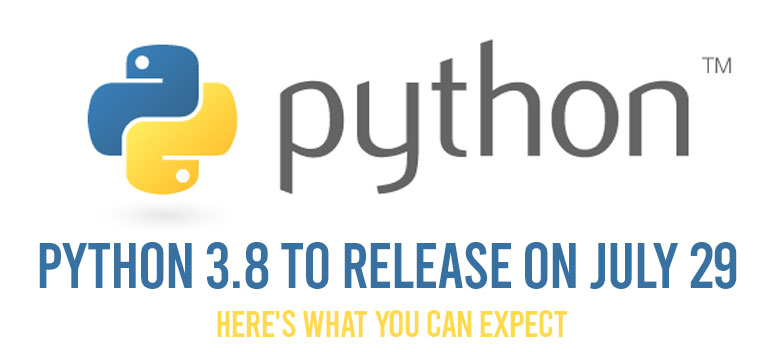
Python has recently rolled out an upgrade of version 3.8 on 29th July 2019. It has added several useful and efficient features in version 3.8.
Python is a high-level programming language used for general-purpose coding and is being used widely.
It was first designed and built by a Dutch programmer named Guido Van Rossum. Python was then first introduced in the year 1991.
Python supports multiple programming models. It is actively typed and garbage-collected.
Python is climbing the stair to the world’s most popular programming language according to data. More than 8 million developers use this specific programming language in the world to code which even beats the record of Java of 7.6 million users.
Python can mainly be used to develop different applications like graphic user interface based application, software development application, web applications, numeric and network programming. Gaming applications and business applications are also developed using Python programming language.
Let’s explore on Python version 3.8
Python has never stopped surprising us and as a developer, I can say this update can intrigue you to look further into it’s potential.
Features of Python version 3.8
- Building debugs: Python has recently started using the same ABI even if it is built-in release or debugs mode. Loading C extensions built using stable ABI is also made possible today. This version of Python 3.8 release builds and debug build ABI suitable. C extensions are now being linked to Android and Cygwin on Unix, instead of Libpython. There is a possibility to statically link Python to old C extensions using a shared Python library.
- Python initialization configuration – The Python code configuration is spread all over the code. All new C-API is recently introduced by PEP 587 to configure the Python initialization. This API has enabled features to read and modify configuration before applying and can help developers to gain more control over configuration.
- Programming bugging – Long ago in Python 3.6, we were first introduced to formatted strings( f-strings ). The debug support could help you with assessing an expression as que of the string along with inserting the result of functional calls.
Here in Python Version 3.8, some additional syntax has been added for easy debugging. One could do it by casting a specifier and conversation. This new version has changed the way of print-style debugging.
- Positional -only Parameters – The positional only parameter was first introduced in PEP 570 on January 20, 2018. In this version, a new syntax (/) was introduced to specify positional only parameters in Python functions definitions. Developers found out the positional only parameters are similar to how * indicates that the arguments to its right are keyword-only but many built-in CPython functions already use the syntax.
- Lateral file system cache – The new version of Python cache prefix settings can also set up the definite bytecode cache. Mainly you can use this to separate a parallel filesystem tree. The position of the cache is reported in sys.pycache_prefix.
- PEP 572 for Assignment Expressions – It is also known as a walrus operator. It is needed to assign values to variables without the requirement of initializing the variables upfront.
- PEP 590 – Vectorcall: A first calling protocol for CPython.
- Typing aspect: PEP 591 (Final qualifier), PEP 589 (Typeddcit) and PEP 586 (Literal Types )
- In Windows, the default Asyncio event loop jas been changed to Proctor event Loop now.
- The spawn start method in macOS is used by default in multiprocessing.
- LOAD_GLOBAL is made much faster than before.
- Debug build share ABI as a release build.
Impact of Upgrade – The packages which are compatible with Python 3 need to reconstruct. Previously written Python 3 applications are supposed to require a porting. And Python 3.7 is made compatible with Python 3.8.
How do you test Python
Those who are interested in testing your Python 3 script could do. Your Python 3 module or applications can be tested with Python 3.8 version and you can analyze how it works out. You can use Python38 if the application you are testing doesn’t need any other module. You can do it before implementing it in Fedora 29 or 30.
I hope all your queries are met here.
Wrapping up
As Python version 3.8 is launched recently you must have needed a summary of what are the special features of version 3.8 and how do they work. I hope this article could help you to understand Python version 3.8’s uses and features better. Keep yourself into the loop to get more information on programming languages and technological advancement.
